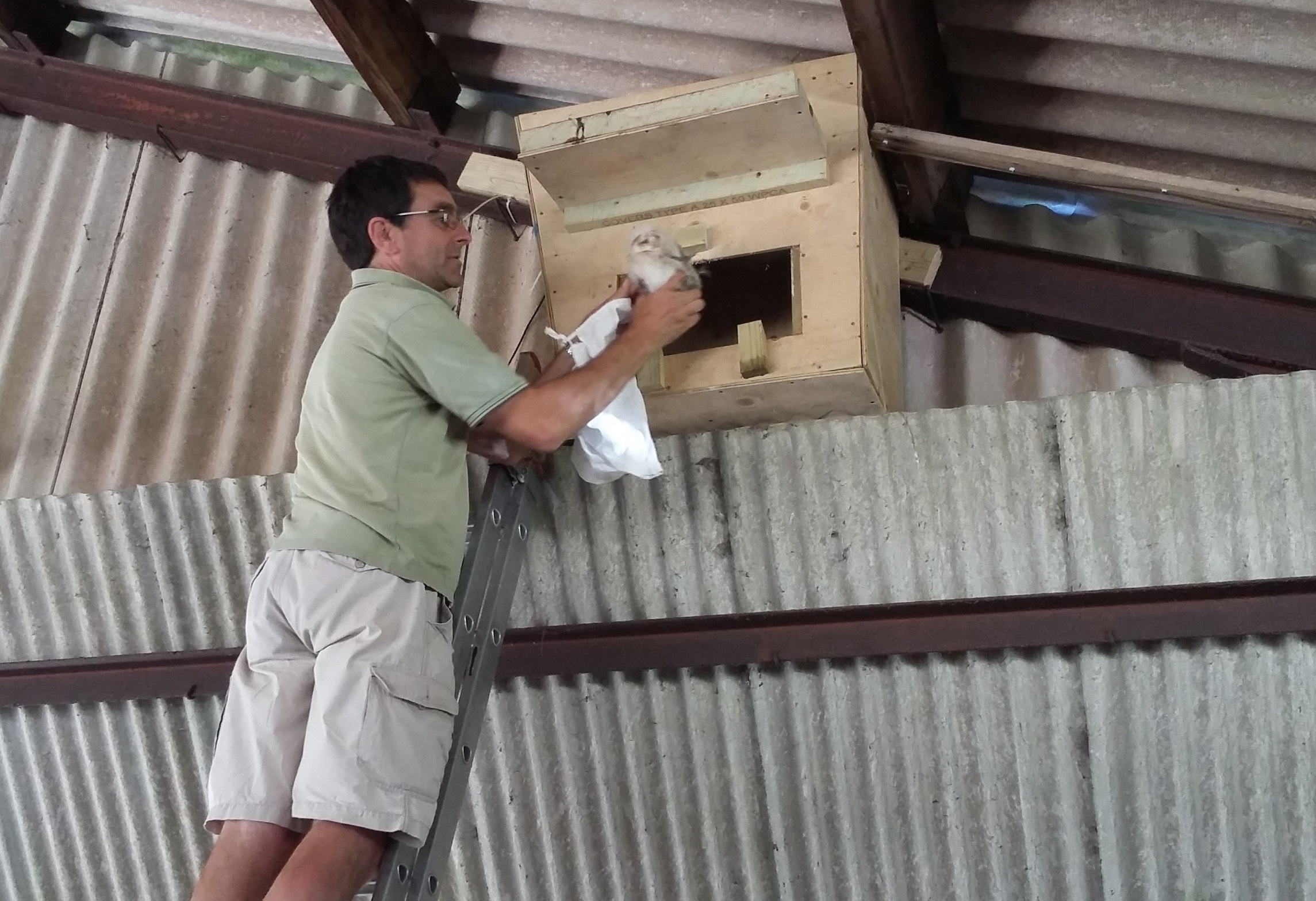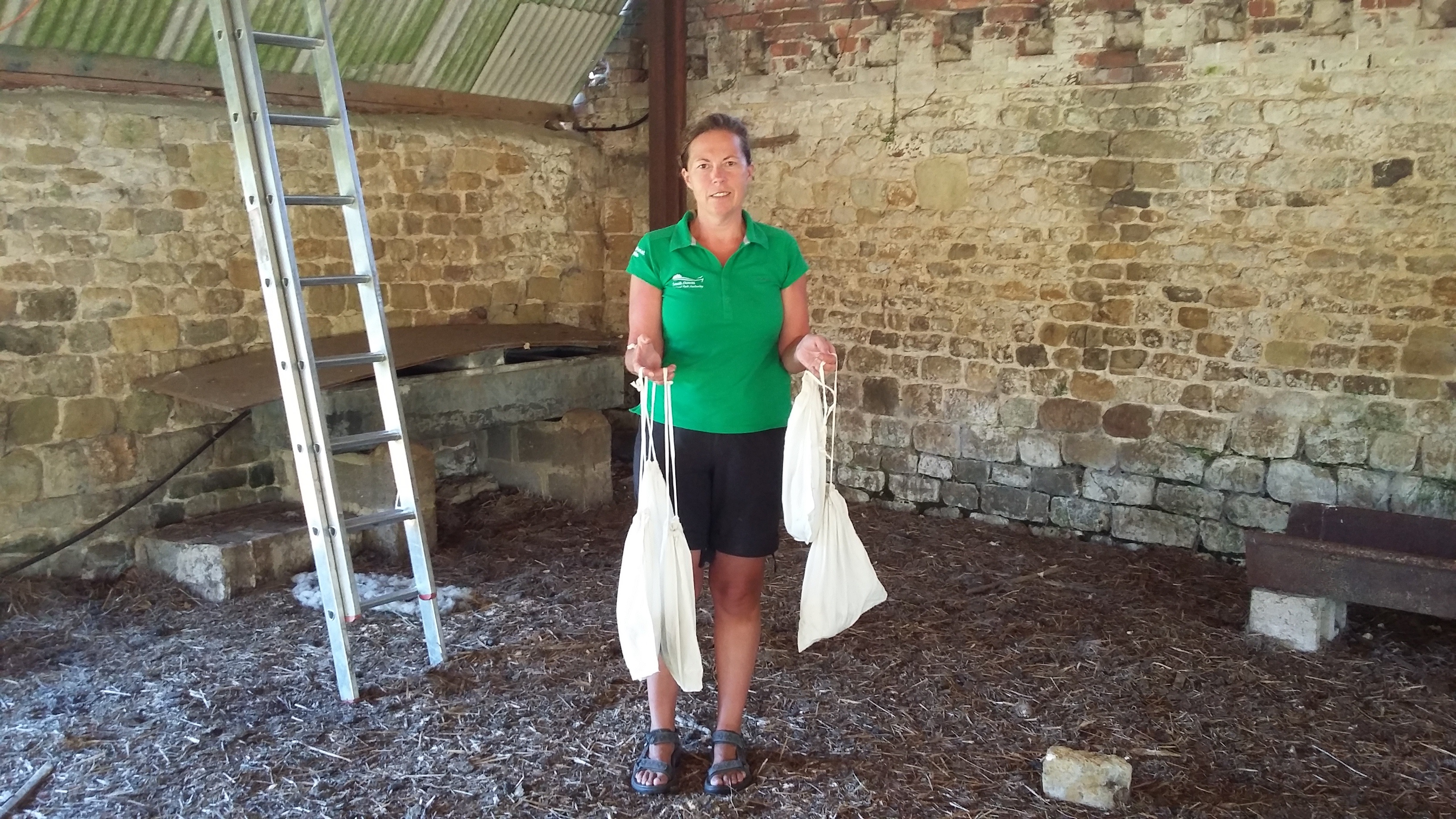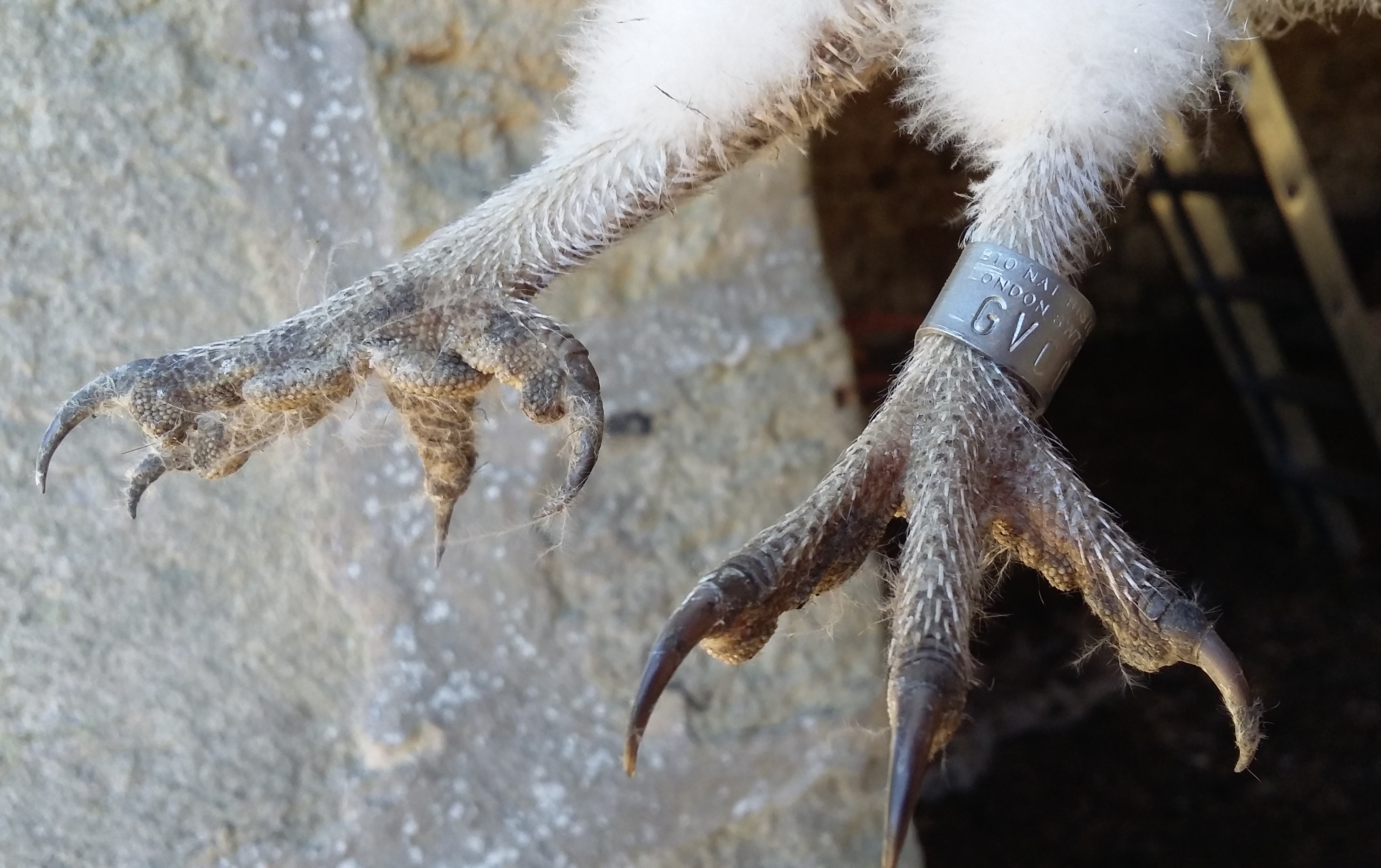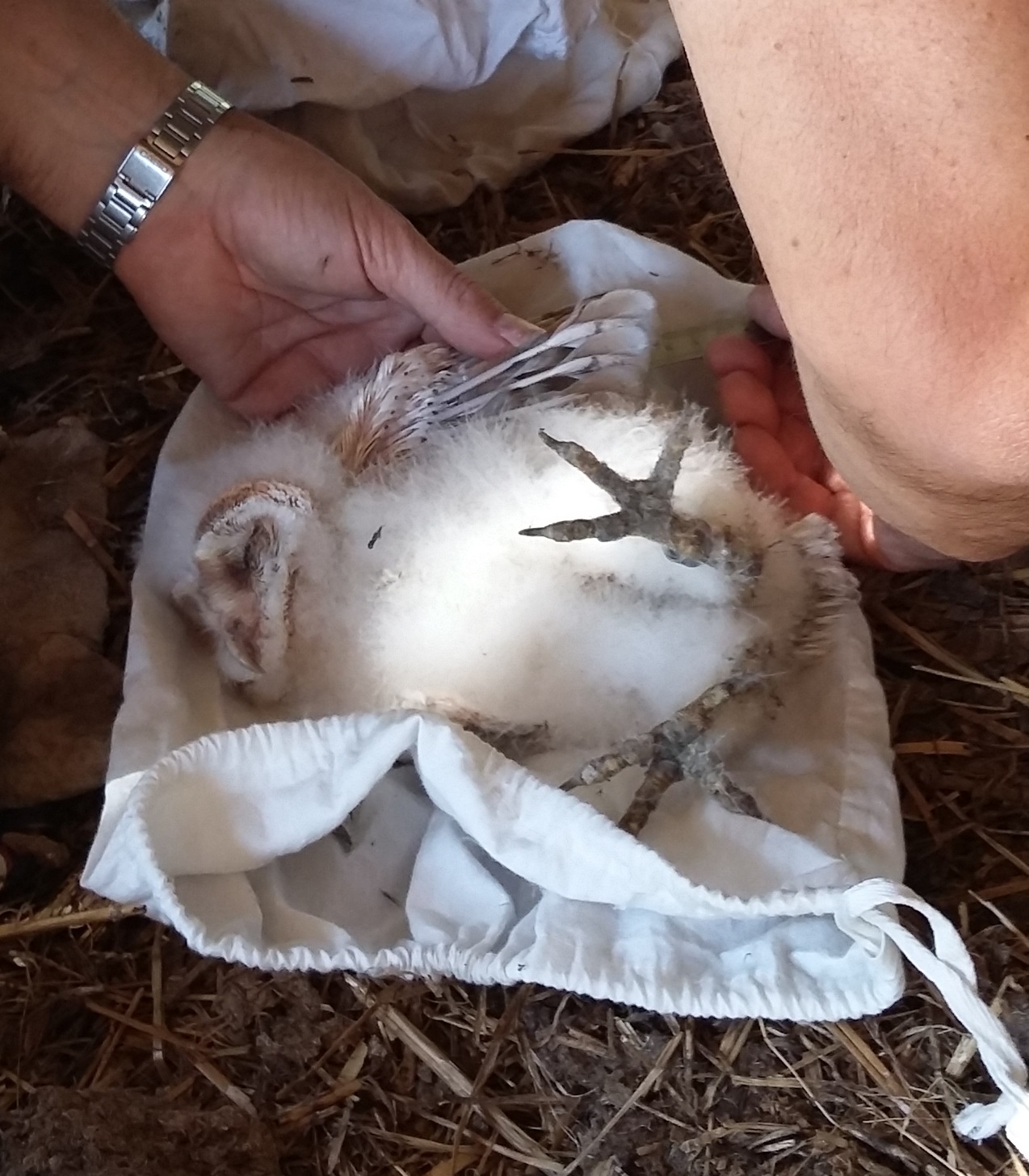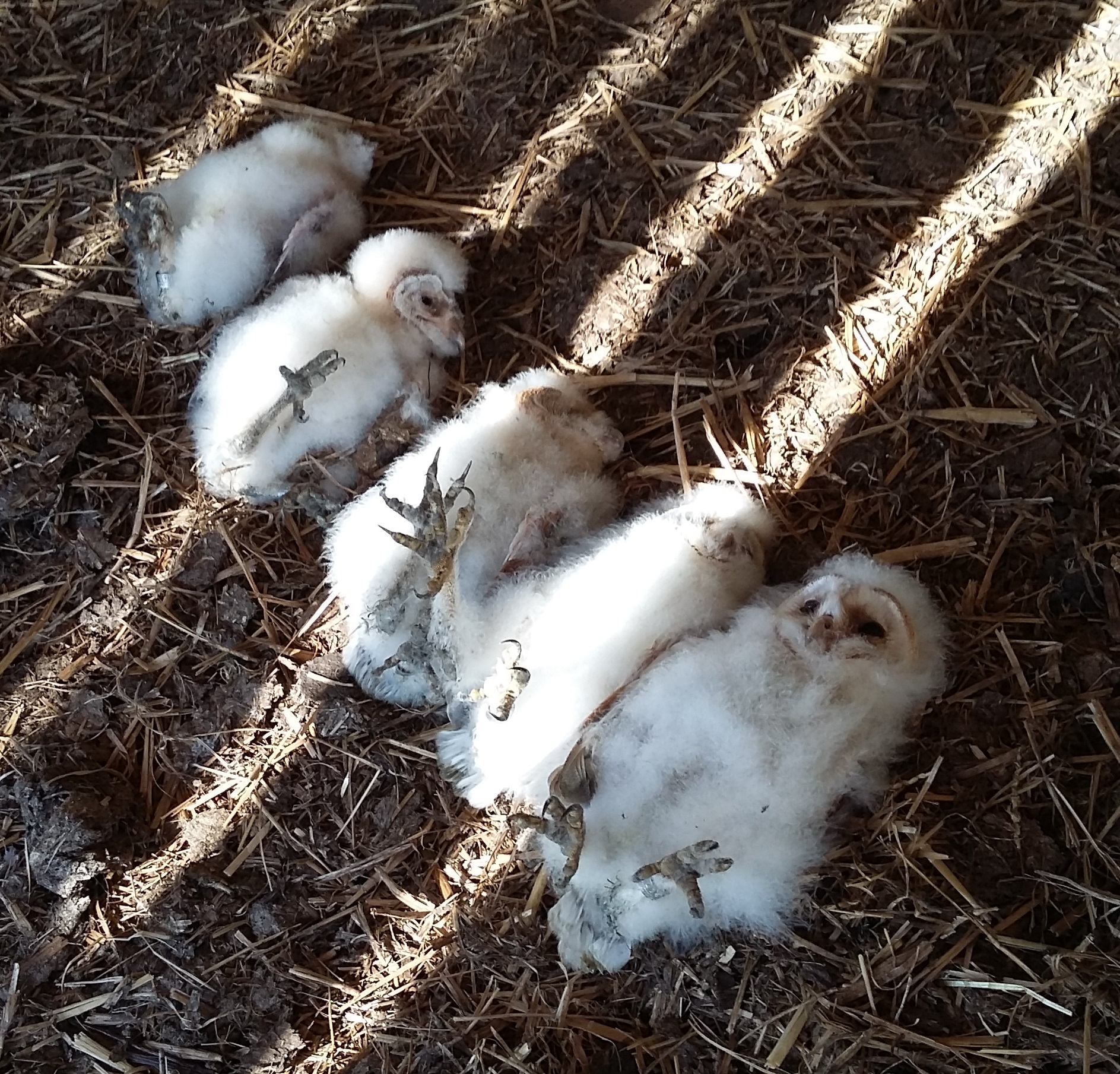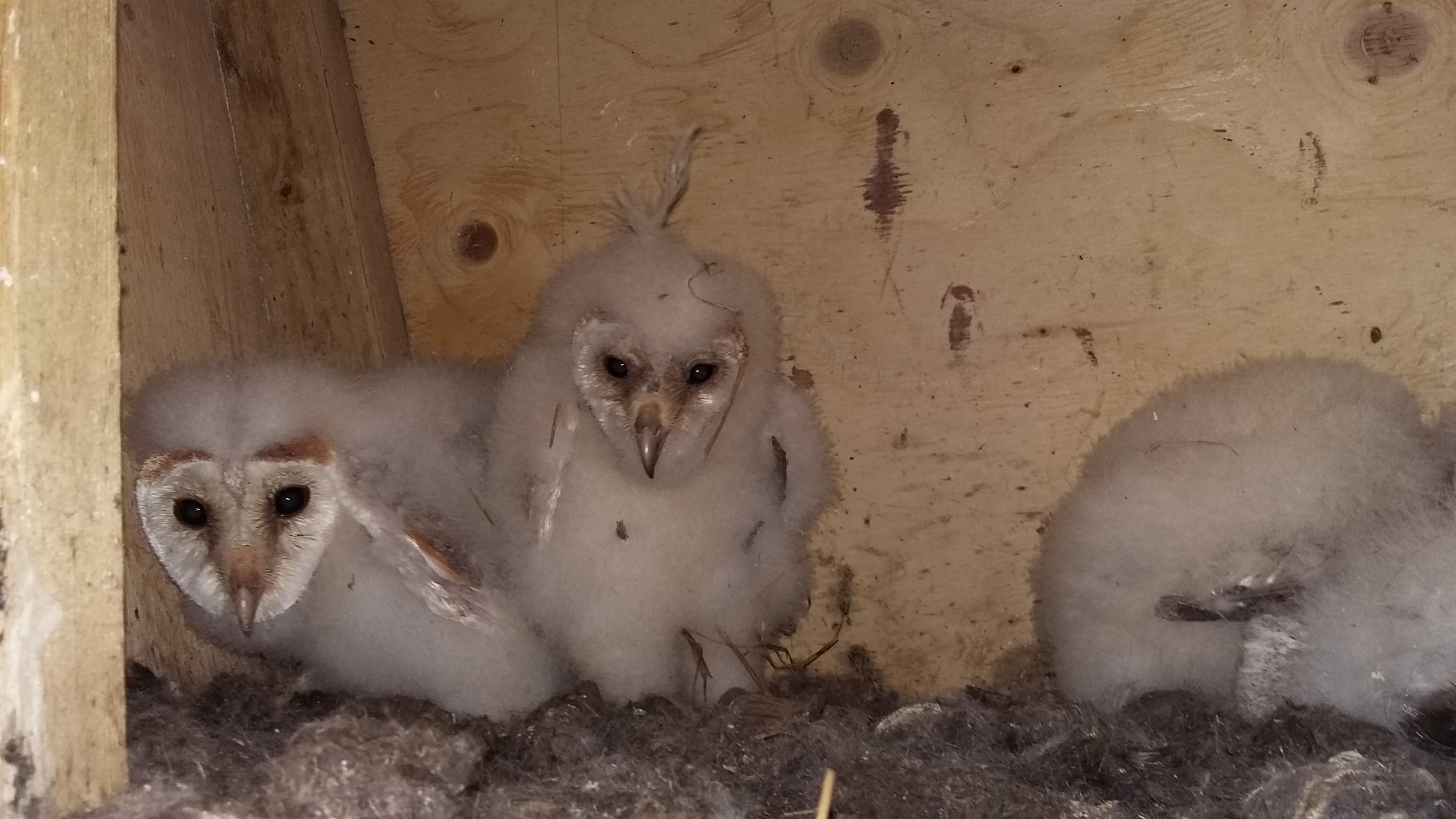Barn owl chicks weighed & ringed
July 4, 2018
There must have been a plentiful supply of mice and voles this June because our web cam barn owls have been able to keep all five of their chicks alive into July!
The chicks hatched between 25 May and 4 June 2018 and with the youngest chick now almost a month old we were lucky enough to join Graham Roberts, a volunteer for the Sussex Ornithological Society, on 2 July along with South Downs National Park ranger Angela Ward, to ring them.
Barn owls are protected under the Wildlife & Countryside Act 1981 which means that it is an offence to disturb their nests or handle them without a licence. For the record Graham and Angela are both trained and licenced. This was the eighth brood that Graham has ringed in and around the National park this year.
Barn owls can live up to 12 years in the wild and they have been breeding on this site for thirty years. As we approached the barn owl box’s secret location we saw one of the adults flying off. In a corner of the barn we could see one of their regular perches – identified by the large patch of droppings underneath. Angela double-checked the webcam to make sure that the chicks were alone and told us that it’s possible to weigh and ring the chicks without the adults being any the wiser.
Graham set up his ladder and opened the box. The chicks may look cute but the nest didn’t smell great. He then transferred each chick into a cotton bag and carefully carried them down to the ground.
One-by-one, Graham removed each chick from its bag, and fastened a small ring around its leg.
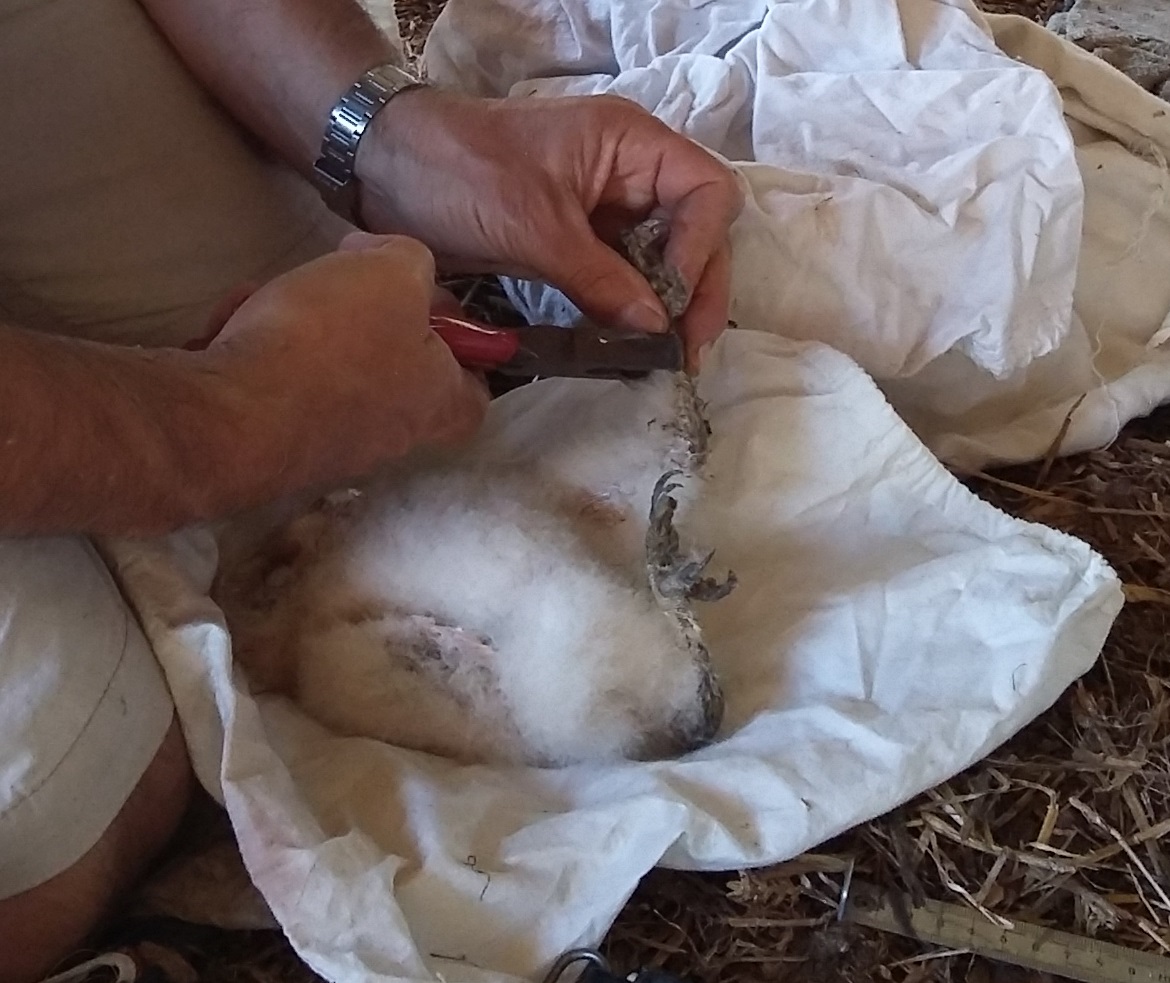 The rings are part of a scheme run by the British Trust for Ornithology (BTO) with the Barn Owl Trust and each has a unique number. Graham showed how he fastens each ring so that it sits loosely enough for the bird not to feel it but tight enough that it won’t catch in a claw.
The rings are part of a scheme run by the British Trust for Ornithology (BTO) with the Barn Owl Trust and each has a unique number. Graham showed how he fastens each ring so that it sits loosely enough for the bird not to feel it but tight enough that it won’t catch in a claw.
Then he measured the seventh wing feather emerging from the fluff – apparently a very accurate way to measure a chick’s age because the feathers always grow at the same rate no matter how much food there is around.
Barn owl chicks are incredibly docile. One had their eyes shut entirely whilst another’s face might be described as bearing the resigned expression of a routine dental inspection. After he’d weighed each chick Graham laid them out in age order so we could see the different stages of their development.
Then it was back in the bags, up the ladder and home to their box before the parents could return.
Barn owls are slower to develop than some other birds but will fledge between eight and nine weeks. With the oldest chick now five weeks old we’ll be watching the webcam carefully over the next few weeks and keeping our fingers crossed that the mice and voles keep coming.

